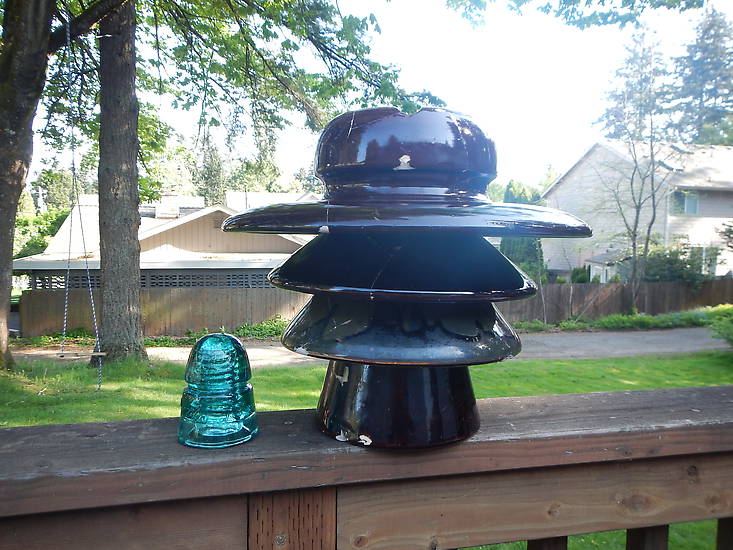The Hales Bar insulator... M-4412
By Michael Spadafora; posted May 4, 2015
View Original (4608 x 3456) 3386KB
 |
The Hales Bar insulator.... I'm Nearly finished restoring one of the rare insulators Jeffery Kramer and I recovered in mid March near Chattanooga, Tn . You might ask ... Why did I drive all the way from Seattle to Tennessee to dig this up(almost 3000 miles) ...? The answer is to recover this piece which is of a totally unique design . These insulators were used no place else on earth . They were only in service from about 1911 to about 1925 and none have ever been seen or found by collectors in modern times before this. It took a week of careful digging to locate enough shards to reconstruct less then half a dozen of these. I suspect very few more will ever be recovered and likely no whole ones will ever be found because many of the old tower locations were obliterated by a modern interstate highway and many others are in urban or more developed areas or forested areas that were heavily disturbed by logging or other construction. The line crews destroyed all the insulators to recover the big cast steel pins they were cemented to for scrap when the line was upgraded and left the insulator shards scattered widely around and under many tower bases . The huge crown design is totally unique and we suspect they had special clamps rather then a normal tie wire to tie the conductor to the crown though we have yet to find a photo showing how the ties were made . The power line itself came from the famous hunted Hales Bar Powerplant that sits prominently in the register of ghost hunter TV programs in popular media ... This insulator design was clearly influenced by the Insulator failure research of L.C.Nicholson on the Niagara- Syracuse transmission lines. These have a characteristic shorter more squat design with skirts designed to be less prone to fracture from the heat of a lightning flashover and a very thick crown that might better resist puncture . Unfortunately, this design still had the disastrous long cement joints that would expand and fracture the porcelain do to cement growth as well as relatively thin skirts that were susceptible to flashover heat damage . The design clearly shows itself as an intermediate engineering design link between the early first generation designs of the post Fred Locke era and more modern pin type insulators . Jeff and I saw enough evidence to give us a fairly clear picture that these insulators suffered a fairly high failure rate in service very early on . It seems ironically that the line was doomed from insulator failure from the moment it went into service not unlike the ill-fated power plant and dam itself that struggled from frequent water leaks during it's service lifetime |